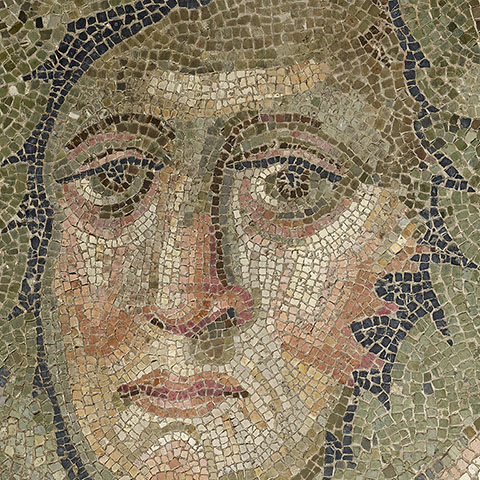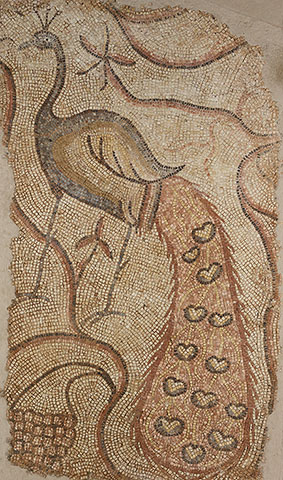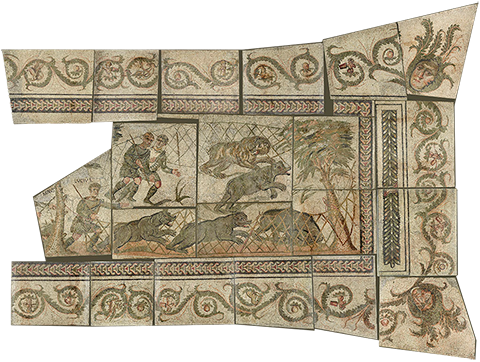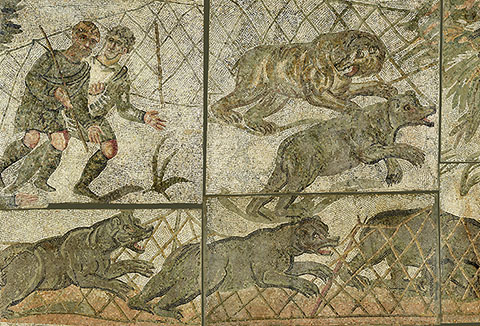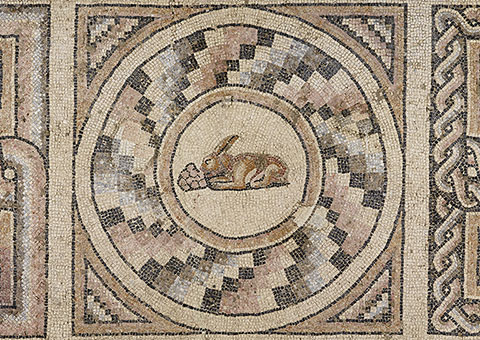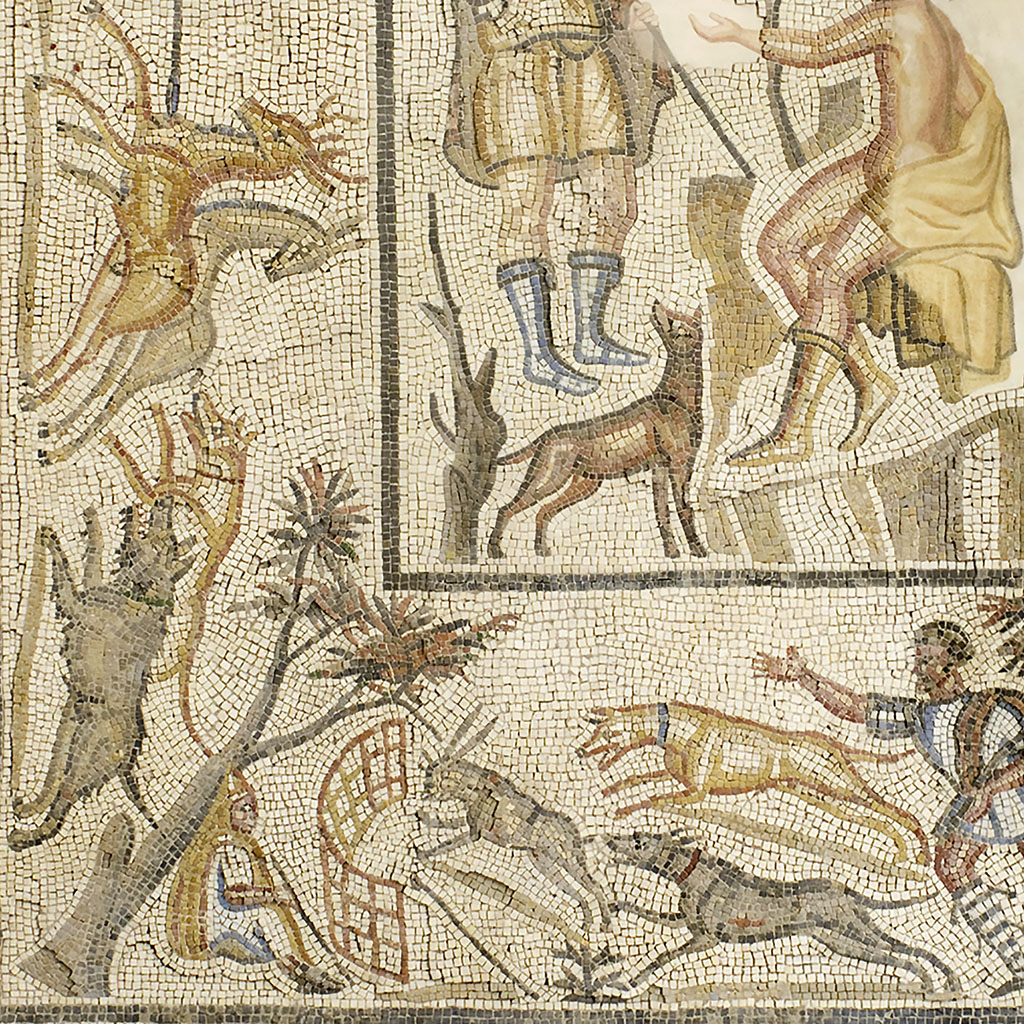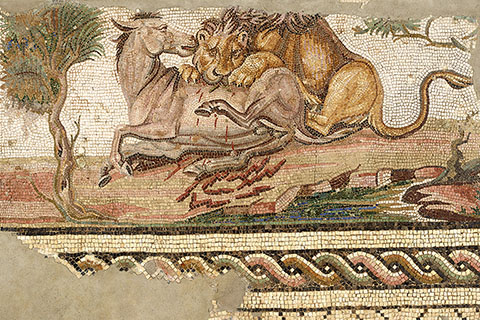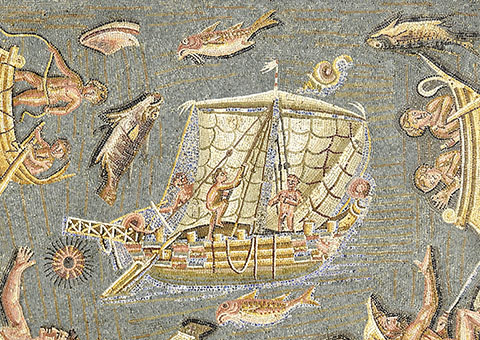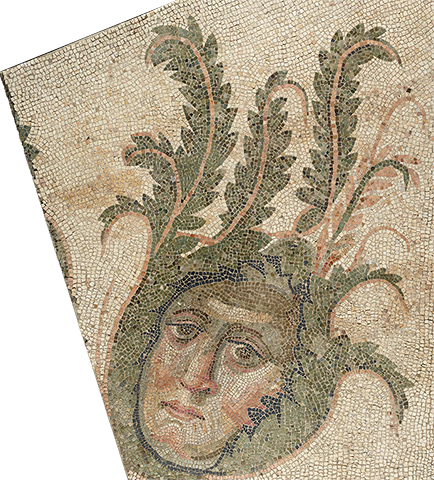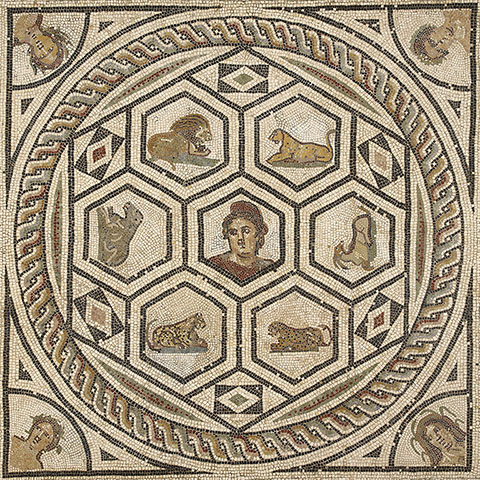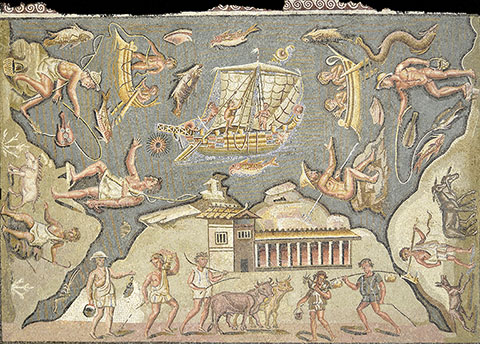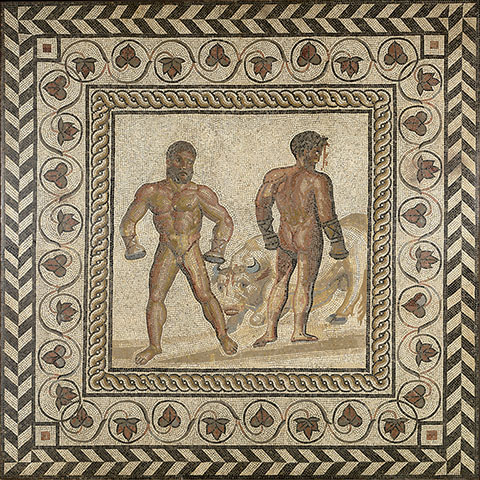Excavations in the ancient village of Huqoq in Israel's Galilee have brought to light the remains of a monumental 5th-century Roman synagogue paved with stunning and unique mosaics, including depictions of the biblical hero Samson. In this illustrated presentation, excavation director Jodi Magness describes these exciting finds, including new discoveries made last summer. Event is free, but ticket required.
Sunday, April 3, 2016, 3:00 p.m.
Getty Villa, Auditorium
Roman Mosaics across the Empire
March 30, 2016–January 8, 2018Getty Villa
In ancient times, mosaics decorated luxurious homes and public buildings across the Roman Empire. Intricate patterns and figural scenes were created by setting small pieces of stone or glass, called tesserae, into floors and walls. Introduced by itinerant craftsmen, mosaic techniques and designs spread widely, leading to variety of regional styles. The mosaics in this exhibition date from the 2nd through the 6th centuries A.D., and come from far-flung places: Italy, North Africa, Southern France, Turkey, and Syria. Recovered from various archeological contexts, they provide a glimpse into the richly embellished architecture of the ancient world.
RELATED EVENTS
LECTURES
Roman Mosaics: Evolution, Imagery, and Regional Characteristics
Mosaics first appear in the Greek world during the Hellenistic Age, yet it was under the Romans that they became ubiquitous across the Mediterranean world and beyond. Archaeologist Demetrios Michaelides examines the development of mosaics as an art form, its spread throughout the Roman Empire, and its contribution to our understanding of the ancient world. Event is free, but ticket required.
Thursday, June 16, 2016, 7:30 p.m.
Getty Villa, Auditorium
HANDLING SESSION
How were mosaics created from pieces of stone and glass? Learn how these intricate architectural decorations were made in this multisensory handling session. Touch tools and materials similar to those used by ancient mosaicists, including tesserae, slaked lime, marble dust, and nippers. This is a free, drop-in program.
Thursdays and Fridays, March 31 through September 9, 2016; 11:00 a.m.-12:00 p.m.
Getty Villa, Reading Room
CULINARY WORKSHOP
Across the Roman Empire
Join educator and chef Nancy DeLucia Real for a culinary exploration of the ancient Roman provinces. Tour the exhibition Roman Mosaics Across the Empire, then prepare a class meal inspired by historic ingredients from ancient Syria, Tunisia (Carthage), France (Gaul), and Rome. Course fee $95. Complimentary parking. Tickets available beginning April 11, 2016.
Thursday and Friday, May 12 and 13, 2016; 10:30 a.m.–2:30 p.m.
Getty Villa
TOURS
Curator’s Gallery Tours
The curator of the exhibition Roman Mosaics across the Empire leads a one-hour tour of elaborate mosaic floors from Italy and its provinces in Gaul, North Africa, and ancient Syria. Sign-up begins 15 minutes before the talk at the Tour Meeting Place.
Thursdays, April 28, May 19, June 2, 2016; 2:00 p.m.
MOBILE TOUR
Free GettyGuide® Multimedia Player

Pick up a multimedia player free of charge in the Museum Atrium.
VIDEO
Bulla Regia: A Model Conservation Project
Famed for its underground villas and mosaic floors, Bulla Regia is the site of an ancient Roman city located in Tunisia. The Getty Conservation Institute heads a model conservation project there, demonstrating best practices in the conservation of in situ mosaics.
PUBLICATION
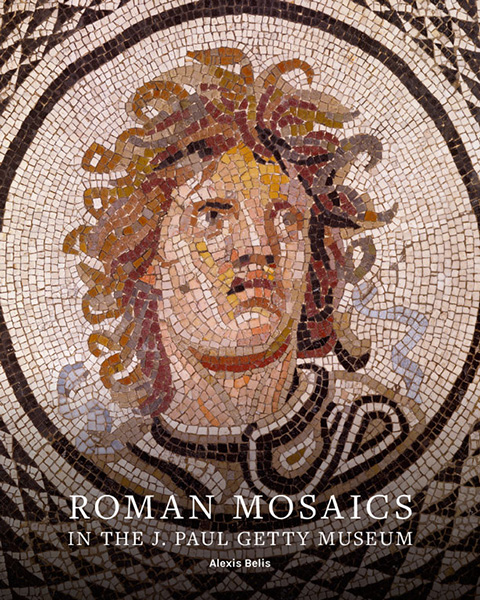
Free online collection catalogue
Roman Mosaics in the J. Paul Getty Museum
Edited by Alexis Belis
Gallery Text
Read and download the gallery text that accompanies this exhibition in PDF (17 PP, 10.6 MB).
Exhibition Checklist
Download the exhibition checklist PDF (3 PP, 475 KB)
